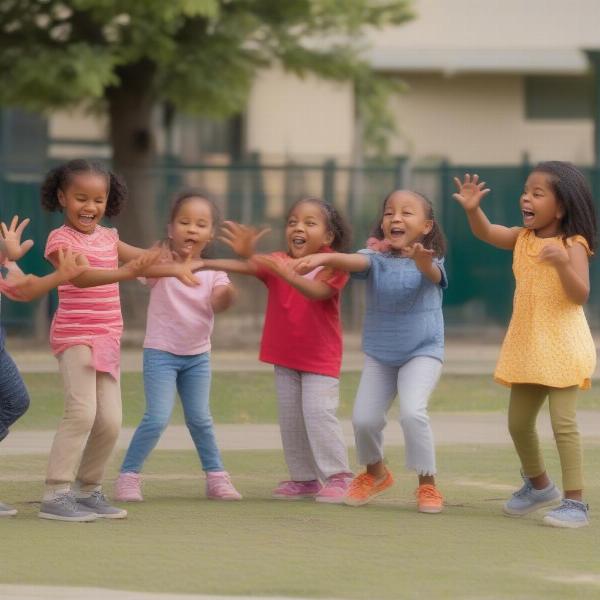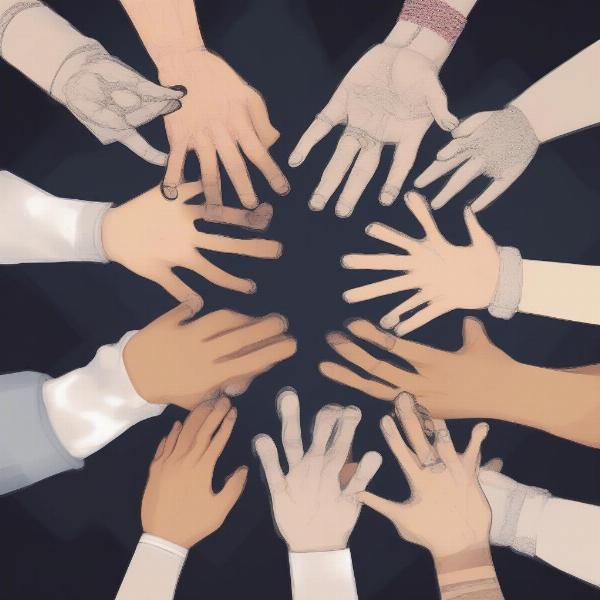Welcome to supremeduelist.blog, your go-to source for dissecting all things gaming, whether that’s on a screen or in real life. Today, we’re taking a nostalgic trip back to the schoolyard with a comprehensive look at the “Mama Mama Can’t You See” hand game. This isn’t just child’s play; it’s a fascinating cultural phenomenon, a rhythm game passed down through generations, and a perfect example of how simple interactions can create lasting memories.
In this article, we’ll explore the history, variations, and the surprisingly complex mechanics behind “Mama Mama Can’t You See”. We’ll examine why this particular hand game has remained so popular, breaking down the rhythm, coordination, and social skills it fosters. Prepare for a journey that will reignite your childhood enthusiasm and give you a new appreciation for this seemingly simple game.
Decoding the Rhythm of Mama Mama Can’t You See
The core of “Mama Mama Can’t You See” is its rhythmic clapping and patting sequence, combined with a call-and-response structure. This game isn’t about winning or losing; it’s about participation, synchronization, and the shared joy of creating a beat. This hand-clapping rhyme game, often passed down in schools and playgrounds, highlights the importance of rhythmic movement in early childhood development.
The game typically begins with one person starting the sequence, often with the lyrics “Mama, mama can’t you see?” or a variation, followed by a rhythmic pattern involving clapping, thigh pats, and sometimes other hand motions. The other participants then join in, following the lead and creating a synchronized rhythm. This rhythmic call and response aspect helps in developing a sense of timing, coordination and listening skills, important for children’s development. The game’s infectious rhythm has made it a mainstay in childhoods around the globe.
The Essential Elements: Clapping, Patting, and Lyrics
The beauty of “Mama Mama Can’t You See” lies in its simplicity. The basic moves include:
- Clapping: The foundation of the game is clapping hands together.
- Patting: Patting your thighs creates the lower part of the rhythm.
- Call and Response: Typically the phrase “Mama Mama Can’t You See” acts as a call, with the response being a specific pattern of claps and pats.
The combination of these elements creates a complex rhythmic sequence. Different regions and communities have added their own variations, from changes in the lyrics to new moves and claps, showcasing its cultural impact and adaptability. It’s a game that evolves and stays fresh as it’s shared.
 kids-enjoy-mama-mama-hand-game
kids-enjoy-mama-mama-hand-game
Variations of the Mama Mama Can’t You See Hand Game
While the core sequence is relatively consistent, numerous variations exist across different regions. Some variations involve faster tempos, more complex hand movements, or even added lyrics. This adaptability is why this hand game is found across various countries and cultures.
Here are some variations you might encounter:
- Speed Variations: Some groups play the game at an increasingly faster pace, challenging players to maintain the rhythm.
- Complex Moves: Certain variations incorporate more complex patting and clapping patterns, requiring advanced coordination.
- Lyrical Adaptations: The words of “Mama Mama Can’t You See” can change, with different communities adding their unique twist.
“These variations are proof of the game’s organic nature, how it adapts and changes with each generation, yet retains its fundamental charm,” says Dr. Anya Sharma, a child development expert. This adaptability is what keeps the game alive and exciting for children, despite its age.
How Cultural Context Shapes the Game
The cultural context plays a significant role in how the “Mama Mama Can’t You See” hand game evolves. For instance, some cultures may emphasize syncopation, while others might focus on adding specific moves that resonate with their cultural heritage. The hand game might even have unique lyrics or versions of the game in different regions of the same country, providing a local flavour to the game. The hand game serves as a cultural mirror, reflecting the values and rhythmic preferences of each community.
This underscores the importance of understanding hand games not just as games, but as living cultural artifacts that hold a special place in the communities in which they thrive. They provide a sense of belonging and identity to those who play them.
 teenagers-learning-rhythmic-hand-clapping
teenagers-learning-rhythmic-hand-clapping
The Benefits of Hand Games Like Mama Mama Can’t You See
Beyond being simply fun, hand games like “Mama Mama Can’t You See” offer several developmental advantages:
- Fine Motor Skills: Clapping and patting movements enhance fine motor skills and hand-eye coordination.
- Rhythm and Timing: The rhythmic patterns foster a sense of timing and musicality.
- Social Skills: Playing in a group encourages cooperation, listening, and teamwork.
- Memory and Focus: Remembering and executing the sequences sharpens cognitive function and concentration.
These benefits highlight why hand games are so important in childhood development. The game naturally encourages children to move, interact, and engage both mentally and physically, making it a holistic learning experience. This is also why teachers incorporate these games into their lessons.
Why Hand Games Remain Relevant Today
Even in a world saturated with digital entertainment, hand games such as “Mama Mama Can’t You See” persist because they provide a unique form of social engagement that technology can’t replace. The joy of syncing up with others, creating a shared rhythm, and participating in a simple yet satisfying activity is timeless. They require no screens, no batteries, and yet offer a wealth of enjoyment and learning.
“In an increasingly digitized world, activities like the ‘Mama Mama Can’t You See’ hand game offer a crucial return to real-world interaction and social bonding,” says Thomas Becker, a social interaction researcher. These games are a valuable bridge between generations, and promote a sense of community, connection and belonging.
Frequently Asked Questions About Mama Mama Can’t You See
Let’s address some common questions about this beloved game:
What is the origin of the “Mama Mama Can’t You See” hand game?
The exact origin is unclear, but its spread suggests it has roots in oral tradition and was passed down over many generations by word of mouth. It is likely from American roots as early examples of the game are from Southern African American communities.
Are there different versions of the lyrics?
Yes, there are many variations. Some are regional, some are based on personal preference, and some are just adapted over time. The primary phrase however is almost always present, even in adapted lyrics.
Is this game only for children?
While it’s traditionally played by kids, adults can and do enjoy it as well. The game is perfect for gatherings and a fun way to reconnect with your childhood.
Can this game improve coordination?
Absolutely. The hand-clapping and patting patterns are great for enhancing motor skills, rhythm, and coordination.
How can you make the game more challenging?
Speed it up, or introduce new, more complicated hand movements, and lyrical variations. The complexity of the game is limited only by the imagination of the group.
 advanced-mama-mama-hand-game
advanced-mama-mama-hand-game
Embracing the Rhythm: Why We Love Mama Mama Can’t You See
The enduring appeal of “Mama Mama Can’t You See” lies in its simplicity and the joy it brings. It’s a testament to the power of traditional play and the importance of community and rhythmic expression. This game encapsulates the essence of play, teaching essential life skills through simple, engaging movements.
The game is not just about the actions, but also about the shared experience, the laughter, and the memories created. It represents a rich history, and cultural transmission, all within a fun and engaging framework. It’s more than just a game; it’s a cultural touchstone that connects us to our past. It’s these types of simple human interactions that endure over time.
So, the next time you hear the phrase, “Mama mama can’t you see,” join in. Embrace the rhythm, reconnect with your childhood, and discover the simple joy of the “Mama Mama Can’t You See” hand game, and remember to visit supremeduelist.blog for all your game analysis needs. Try it now and introduce it to someone new!
Why not share your favorite version of the game in the comments below? We’d love to hear about your experience.
Leave a Reply